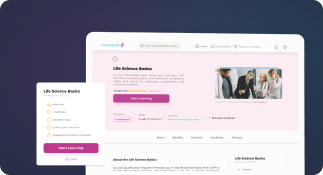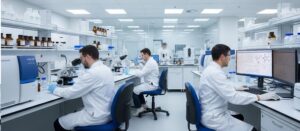Cleaning Validation
Definition
Cleaning Validation is a documented process in pharmaceutical manufacturing that proves cleaning procedures effectively remove residues of active pharmaceutical ingredients (APIs), cleaning agents, microbial contaminants, and other potential impurities from manufacturing equipment. This process ensures that subsequent product batches are not contaminated, thereby maintaining product quality and patient safety.
Detailed Explanation
Cleaning validation is a critical component of Good Manufacturing Practice (GMP) in pharmaceutical and life sciences facilities. Its primary goal is to prevent cross-contamination between different products, especially in multi-product manufacturing environments, by verifying that the cleaning procedures used are consistently effective.
Why Cleaning Validation Matters
Cross-contamination in pharmaceutical manufacturing can lead to serious health risks, regulatory non-compliance, product recalls, and damage to a company’s reputation. Cleaning validation helps ensure that:
- Residual materials from previous production runs are effectively removed.
- Cleaning agents themselves do not remain on equipment surfaces.
- Equipment is safe for the production of subsequent products.
Key Elements of Cleaning Validation
- Cleaning Procedures: Detailed, standardized cleaning instructions for each piece of equipment.
- Acceptance Criteria: Limits for acceptable residual levels of APIs, cleaning agents, and microbial contaminants.
- Sampling Methods: Typically include swab sampling and rinse sampling to detect residues.
- Analytical Methods: Validated methods such as HPLC, TOC, and UV spectroscopy to quantify residue levels.
- Worst-Case Scenarios: Validation must cover the most challenging residues and equipment configurations.
Steps in the Cleaning Validation Process
- Risk Assessment: Identify potential risks of cross-contamination and determine which equipment and products require validation.
- Protocol Development: Create a validation protocol detailing the scope, responsibilities, procedures, acceptance criteria, and sampling plan.
- Execution: Perform cleaning operations and collect samples according to the protocol.
- Analysis: Analyze samples using validated analytical methods to determine if residue levels meet acceptance criteria.
- Documentation: Record all results and observations in a validation report.
- Revalidation: Periodically revalidate cleaning procedures, especially after changes in equipment, processes, or cleaning agents.
Regulatory Expectations
Regulatory agencies such as the FDA, EMA, and WHO require pharmaceutical manufacturers to implement validated cleaning procedures. These expectations are outlined in GMP regulations and guidance documents, such as:
- FDA’s “Guide to Inspection of Validation of Cleaning Processes”
- EU GMP Annex 15: Qualification and Validation
- ICH Q7: Good Manufacturing Practice for Active Pharmaceutical Ingredients
Common Challenges
Pharmaceutical companies often face challenges in cleaning validation, including:
- Defining appropriate acceptance criteria for residues.
- Validating cleaning procedures for complex or shared equipment.
- Ensuring consistency across different manufacturing sites.
Examples and Contexts of Use
Consider a facility that manufactures both penicillin-based and non-penicillin antibiotics. Without validated cleaning procedures, there is a high risk of cross-contamination. Cleaning validation ensures that after penicillin production, all traces are removed before non-penicillin products are manufactured, protecting patients from allergic reactions.
Similarly, in biotechnology facilities, cleaning validation is critical to remove biological residues and prevent microbial contamination in sterile manufacturing environments.



